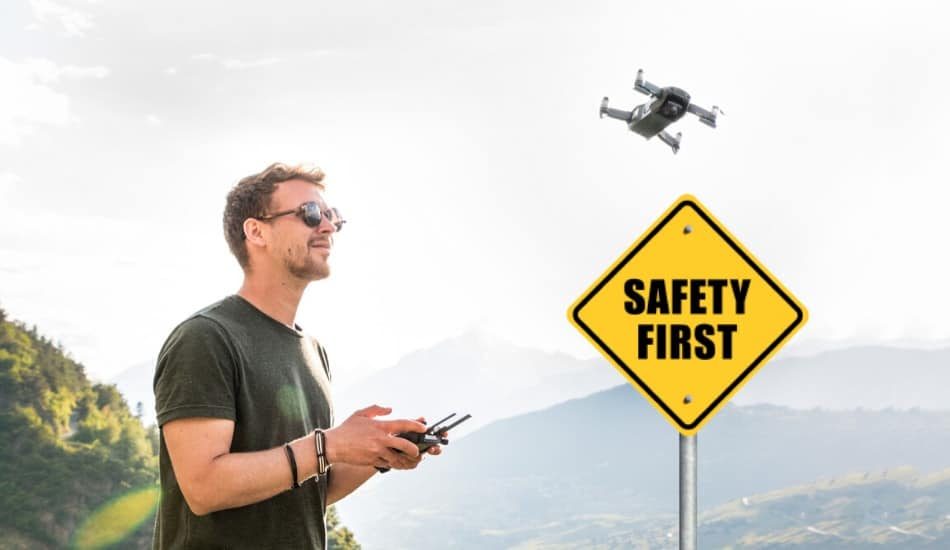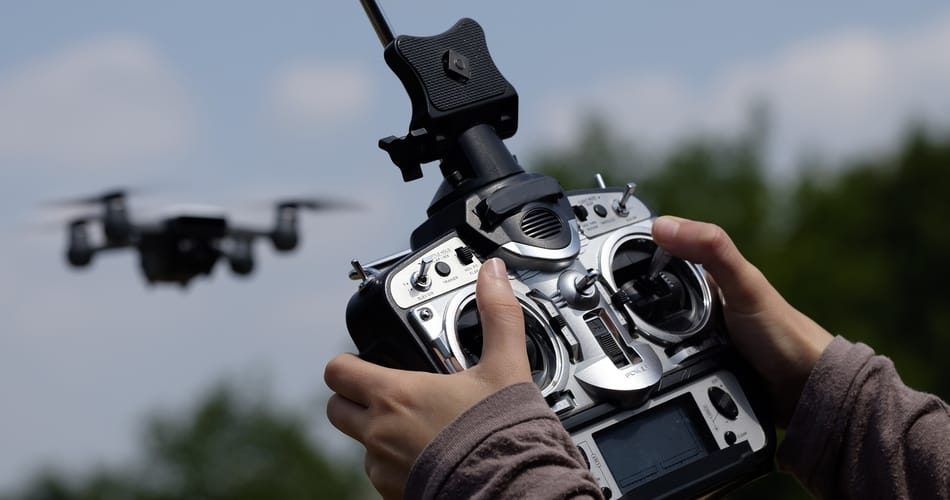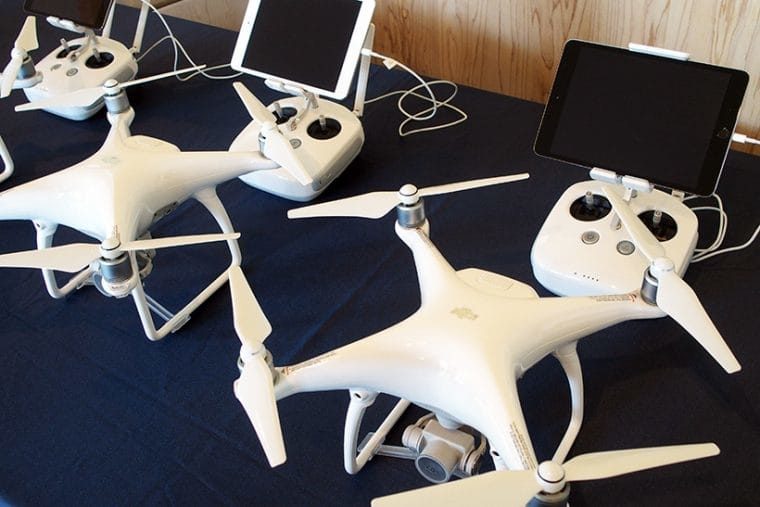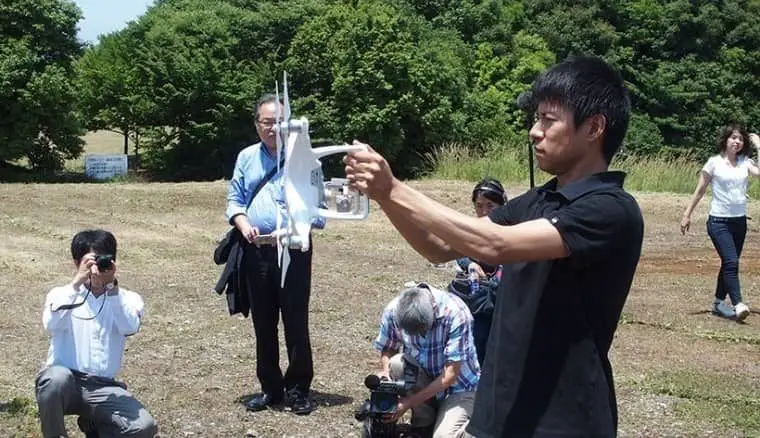Are Drones Safe? Flying Tips, Policies & Regulations

Although drones are safer in terms of performance than before, there is still no „absolute“ safety. Especially drone beginners may experience this. Although you can fly outside, you know in advance that drones are lighter and more susceptible to wind, or you should be careful or discontinue when the wind speed is 5m or higher. As long as safety is ensured, drones can be a device that greatly contributes to improving our quality of life and economic development.
So Are Drones Safe? The drone is safe if you fly in the right way, but there is a risk of accidents if you fly the wrong way. However, 100% of drone safety does not exist. Drones are becoming more secure, at the same time, pilots are required to have a high level of safety awareness and safety knowledge.
There is no “Absolute Safety ” in Drone Safety
No matter how advanced the times, traffic accidents as well as airborne accidents with drones will not go away, no matter how drone evolves, there is no “absolute“ safety. Like the previous Phantom 4, there are certainly drones that are equipped with various safety-friendly functions. However, accidents and incidents that have become uncontrollable, lost or crashed are not lost.
- Lost drone due to sudden rain and wind
- Pilots experienced in maneuvering fell out of control and crashed
- Propeller broke down during drone surveying
- Loss because the automatic feedback function did not work properly did
In this way, the reality is that there are still cases where people feel uneasy about safety.
What Safety Devices Are in the Drone?
Safety can be cited as one of the reasons why drone adoption has been delayed. What measures are actually being taken? The drone is equipped with a safety device as standard, as well as being handled with care by humans. This time, we will also explain the functions and precautions of drone safety devices. The following safety devices are installed in the drone:
- Speed range
- No fly zone
- Safety flight at single propeller failure
- Drone stabilization in high winds
- If you remove your hands with the control stick the drone stabilizes
- Possibility of avoiding objects
- Return home function
- Low battery recognition and automatic landing
The drone is equipped with various safety devices as described above, which enables safe driving. In order to fly a drone, you need to know and use the safety device first. However, rather than relying entirely on the device, you will need to control yourself with safety in mind.
Tips For Pilots Using a Drone For The First Time

- You need to safely control your drone, and keep an eye on you batteries, cold environmentor and wind
- Try to have someone with that has already piloted a drone
- Try to fly your drone in the open space and away from people
- Try to be close to the ground when your flying a drone and at low speed
- When you fly your drone, let it be during the day
Has Drone Safety Been Improved?
Since drone falling to the prime minister’s residence on April 22, 2015, drone-related accidents have continued, and the number of people who are worried about safety has increased.
Isn’t the drone dropping accident that occurred at the event venue in Ogaki City (Japan), on November 4, 2017, a new place in your memory? In this accident, six men and women aged 5 to 48 were injured. Since 2015-16, which is said to be the first year of drones, there have been many accidents every year that raise questions about the safety of drones. It has been several years since drones became widely known in World, but has the safety improved in terms of the performance of the drones themselves?
For example,“Phantom 4“ released by DJI in March 2016 is
- Automatic hover even when you remove your hand from the controller
- Stable flight even in places where GPS cannot be received
- Equipped with a function that can stop and avoid obstacles
It became a hot topic by incorporating technologies that improve safety. The operability has also been greatly improved, and it can be said that it has improved in terms of safety compared to before by incorporating functions that take into account the above safety. However, this is only an improvement in the safety of the drone itself.
Case of Accident Caused by Drone
Fall accident at Ogaki Robot Festival venue, 6 people including 4 children lightly injured on face and back
- Gatwick airport drone incident, airplane takeoff and landing delayed
- Drone touches helicopter in Ishikawa
- Drone crashed into birds in Fukui Prefecture
- Drone crash in Himeji Castle
- Unauthorized shooting from high places
- Drone crashed at construction site and worker injured
A crash in a crowd of people is dangerous, and if such an accident continues in the future, stricter laws will have to be enforced. Unauthorized shooting at heights and flying drones in airports are a problem that can be prevented, so they are subject to regulations. Although collisions with helicopters can be prevented, it may be difficult to prevent collisions with birds. For this reason, it is better not to fly where there are many birds, but there are no rules to avoid contact with birds at present, because it is difficult to draw a line of regulations.
Confirming Drone Safety By Yourself
The following are important for the safe handling of drones:
- Confirm safety at all times
- Understand drone structure and performance
- Understand numerical values of sensors and battery functions
- Understand accident patterns
- Predict handling errors and accidents
This are just basic things, but it ’s important to always be aware of these basics, rather than doing difficult things. Rather than entrusting everything to safety devices, it can be said that it is necessary for humans to consciously make up for parts that cannot be made safety devices.
New Functions For Safety Flying a Drone

Phantom 4 is convenient because it detects obstacles with the front sensor and automatically avoids or stops. 90% of drone accidents are due to mishandling, so accidents can be avoided even in situations where the operator crashes. Phantom 4 also has a function that, when a subject is specified, is automatically captured by the camera even if the subject moves around. This is convenient when you are shooting a moving subject, because you do not have to operate the camera and shoot at the same time.
It also has a „go-home“ function that automatically returns to where it left off when the radio wave is lost or becomes inoperable. The radio wave can be communicated up to 3.5km, but even if the radio wave goes off due to some beat, it will return properly without being lost. A sports mode is also available for advanced users and those who want to enjoy racing. Functions such as crash avoidance will not be available, but in normal mode it will fly at 20-30km/h, but it is possible to speed up to a maximum speed of 75km/h.
There is no 100% safety in drones. There are many crashes that can not be controlled.
The ability to grasp the environment of the flight area and prevent accidents in advance, and be able to cope calmly even in the worst situation. I will say it again. There is no 100% in the drone. You can stop if there is something in the car, but if there is something in the drone, it will crash. How much knowledge, experience, and how to deal with it can be said to be the starting point that does not cause the worst accident .
Suggestions For Regulatory Frameworks And Standards
The aim is to create appropriate rules so that the use of drones does not endanger commercial air traffic. Only in this way can the great potential of civilian use of drones be exploited. It is important for air traffic that internationally as uniform as possible regulations are created.
For this, the following key points must be considered:
- Registration requirement for all drones above 250 g take-off weight
- Certification according to defined standards along the entire product life cycle
- Test fields must be determined in order to test unmanned aerial systems and thus demonstrate their safe operation
- Recognition in the airspace must be guaranteed
- Qualification of drone pilots – basic aviation skills must be taught and tested by authorized persons.
- Protective measures to safely ward off drones, including established reporting systems and clearly regulated sanctions
- In future, drone operations at airports will have to be regulated by standard scenarios at European level
Respect Other Laws
People should respect all laws that are prescribed when you are flying your drone. We encourage you to read the following before using your drone for the first time, including:
- relevant sections of the Criminal Code , including offenses affecting aviation or marine safety , break and enter and mischief
- provincial legislation on acts of intrusion
- legislation on voyeurism and the protection of privacy
What you also have to respect is the privacy of others when using your drone. We investigate reports of dangerous flights. Others can call local police if you do not follow the law.
Rules For Safety Before Using Your Drone

It is important to be responsible when you fly your drone to avoid hurting others. Here are the rules to follow.
- Understand the legal requirements for using a drone
- Understand the differences between basic and advanced operations
- Consult the knowledge required
- Get a drone pilot certificate
- Choose the right drone to perform advanced operations
- Register your drone
- Follow the instructions of the manufacturer of your drone
- Evaluate the area in which you will pilot your drone
- Advanced Operations Only – For controlled airspace operations (Class C, D or E), a flight authorization is required.
Sanctions For Dangerous Exposure of Drone
If you own a drone and violate any of the above rules, you may receive very serious fines such as fines or imprisonment.
Fines for Natural Persons
- Up to $ 1,000 for flight without a drone pilot certificate
- Up to $ 1,000 for theft of unregistered or marked drones
- Up to $ 1,000 for theft in unauthorized locations
- Up to $ 3,000 if the security of aircraft or people is compromised
Almonds for Legal Persons
- Up to $ 5,000 for flight without a drone pilot certificate
- Up to $ 5,000 for theft of unregistered or marked drones
- Up to $ 5,000 for theft in unauthorized places
- Up to $ 15,000 if the security of aircraft or people is compromised
If you break more than one rule, you may be subject to several penalties.
Conclusion
Here we have seen how many factors affect how safe the drones are. Drones are still in their infancy. Their abilities will develop over the next few years. Society and law enforcement must be aware of the threats they pose. Devices developed for noble purposes may be misappropriated. For example, China has developed a solar powered drone that will soon be able to fly permanently. If you incorporate a camera and ultra-powerful and modern facial recognition technology, you get a drone that can fly indefinitely to recognize a pre-programmed target. With a small warhead, which would not need a military-grade drone, a target can be located and automatically eliminated. It may sound like science fiction, but it’s already workable. The only big problem is that drones are not sufficiently regulated and their safety also needs to be improved. No body has yet claimed the power to regulate them to prevent them from posing a serious threat to society.

